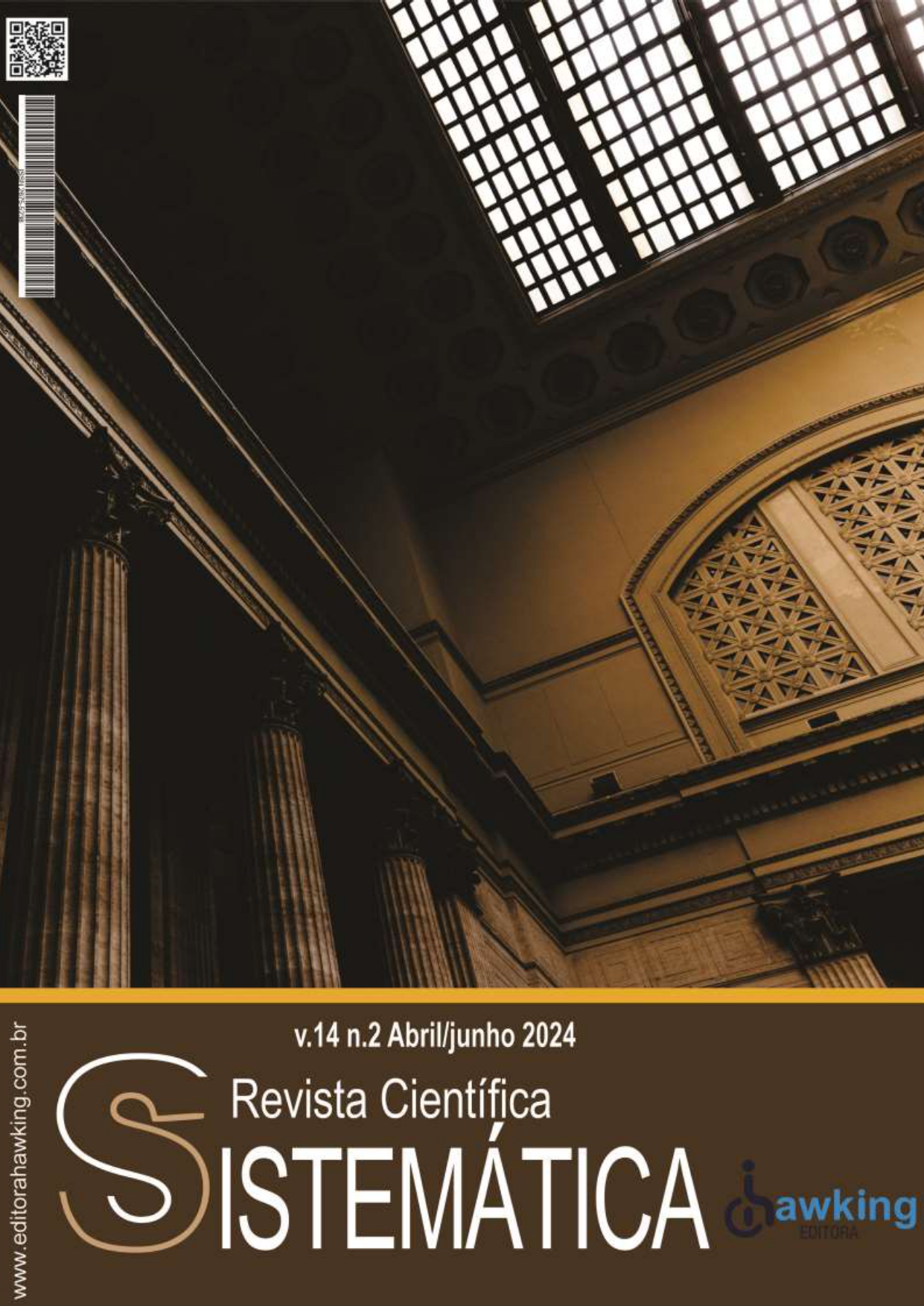Importance of the veterinarian in the diagnosis of Cryptorchidism in horses: Literature review
DOI:
https://doi.org/10.56238/rcsv14n2-012Keywords:
criptorquidismo, equinosAbstract
Regardless of leisure or work, the population of horses has increased, due to the influence on the relationship between humans and these animals, thus increasing the relevance of these animals in people's daily lives. In the reproductive process of horses, different types of problems can occur, such as genetic failures, which can happen during the process of fertilization and embryological development, or even due to some genetic mutation suffered, with cryptorchidism being a failure that occurs during development. Cryptorchidism is defined as a disease that affects the progression of the descent of the testicles, being interrupted, so that one or two testicles are retained in the abdominal cavity or in the inguinal canal. This path taken by the testicles to the scrotum is a highly complex and multifactorial process, and may present failures. The objective of this study was to verify the importance of the veterinarian in the diagnosis of cryptorchidism in horses, using a literature review. The classification of this disease is based on the inguinal canal and is named as: complete abdominal cryptorchid, incomplete abdominal cryptorchid or abdomino-inguinal and inguinal tumors. It should be noted that genetic factors are the main cause of cryptorchidism, with high chances of mutations occurring in more than one gene and the tendency to be an autosomal recessive inheritance pattern. The diagnosis and the next conduct must be carried out by the veterinarian, due to factors such as possible heredity, where the professional in charge must be able to distinguish the necessary measures to avoid the transfer, and the unknown history of the animal, which may have previous castration, making hormonal dosage necessary. Considering the importance of genetic transmission and the potential of this animal for future generations, it is considered essential for the veterinarian to obtain early diagnosis and appropriate treatment, allowing quality control of future progenies.
References
BATISTA, A. S. G.; MOURA, A. J. O. L.; HENRIQUES, M. O. Criptorquidismo unilateral em equino: Relato de caso. Saber Digital, v. 9, n. 2, p. 61-71, 2016. Disponível em: file:///C:/Users/maris/OneDrive/Documentos/Artigos%20p%20revis%C3%A3o/Batista%202016.pdf. Acesso em 30 jan. 2024.
BRINSKO, S. P. et al. Manual of equine reproduction. Missouri: Mosby Elsevier, 2011, p. 250-255. Disponível em: https://edisciplinas.usp.br/pluginfile.php/5102130/mod_resource/content/1/Brinsko%2C%20S.P.%20et%20al.%20MANUAL%20OF%20EQUINE%20REPRODUCTION.pdf. Acesso em 30 jan. 2024.
CACERES, A. M. Análise das possíveis causas do criptorquidismo equino e suas implicações. Botucatu, 2022.
CARLOS, D. J. S. C. et al. Criptorquidismo unilateral abdominal em equino: relato de caso. VII Congresso de Iniciação Científica da FEPI. Itajubá, 2018. Disponível em: http://revista.fepi.br/revista/index.php/revista/article/viewFile/468/348. Acesso em 30 jan. 2024.
CARVALHO, C. C. A etiologia e as principais consequências relacionadas ao criptorquidismo em equinos. Gama, DF, 2021.
CASTRO, B. S. Infusão contínua de detomidina e butorfanol associados a bloqueio locorregional, na criptorquidectomia de equino em estação: relato de caso. Mossoró, 2020.
FREIRE, L. Q. B. Tumor das células de Leydig em um equino criptorquidas – relato de caso. Areia, 2018.
HAN, H. et al. Comparative Transcriptomics analysis of testicular miRNA from cryptorchid and normal horses. Animals, Basel, v. 10, n. 2, p. 338-, 2020.
HENDRICKSON, D. Laparoscopic cryptorchidectomy and ovariectomy in horses. Veterinary Clinics of North America: equine practice, Philadelphia, v. 22, n. 3, p. 777-798. Dec. 2006.
IBGE. INSTITUTO BRASILEIRO DE GEOGRAFIA E ESTATÍSTICA. Rebanho de Equinos (Cavalos). 2022. Disponível em: https://www.ibge.gov.br/explica/producao-agropecuaria/equinos/br. Acesso em 30 jan. 2024.
LIMBADO, B. G. Teriogenologia Equina: Método de diagnóstico clínico de placentite e relato de dois casos de criptorquidismo. Porto, 2022.
NASCIMENTO, F. L. S. Criptorquidismo em equinos: ocorrências no hospital veterinário da UFCG, Campus de Patos-PB, no período de janeiro de 2008 a dezembro de 2012. [Repositório Online]. 2014. Disponível em: http://dspace.sti.ufcg.edu.br:8080/jspui/bitstream/riufcg/24241/1/FERNANDA%20LAYANNY%20DE%20SOUZA%20NASCIMENTO%20%20-%20TCC%20MED.VETERIN%c3%81RIA%20CSTR%202013.pdf. Acesso em 30 jan. 2024.
RABELO, R.E. et al. Cirurgia do Aparelho reprodutor de Machos Bovinos e Equinos. São Paulo: MedVet; 2017. 292p.
RIBEIRO, M. G. et al. Estudo retrospectivo de casos cirúrgicos de criptorquidismo equino no noroeste do Paraná. R. bras. Ci. Vet., v. 21, n. 3, p. 160-162, jul./set. 2014. Disponível em: https://doi.editoracubo.com.br/10.4322/rbcv.2014.377. Acesso em 30 jan. 2024.
SCHADE, J. et al. CRIPTORQUIDISMO EM CAVALOS-REVISÃO. Revista Acadêmica de Ciência Equina, v. 1, n. 1, p. 29-40, 2017. Disponível em: http://www.gege.agrarias.ufpr.br/grupeequi/racequi/artigos/2017/criptorquidismo.pdf. Acesso em 30 jan. 2024.
SOUZA, T. F. et al. Casuística retrospectiva em equinos em um hospital veterinário durante um ano. Instituto de Ciências Agrárias UFMG. Montes Claros, 2018.
THOMASSIAN, A. Enfermidade dos Cavalos. 4º ed. São Paulo: Livraria Varela, p. 238-240; 2005. Disponível em: https://pt.scribd.com/document/433610191/Enfermidades-dos-Cavalos-Armen-Thomassian-pdf#. Acesso em 30 jan. 2024.
TROTTER, G.W.; AANES, W.A. A complication of cryptorchid castration in three horses. J. Am. Vet. Med. Assoc., v. 178, n.?, p. 246-248. 1981.
VALDEZ, H. et al. Abdominal cryptorchidectomy in the horse, using inguinal extension of the gubernaculum testis. J. Am. Vet. Med. Assoc., v.174, p.1110-1112, 1979.
VIEIRA, J. I. T. et al. Influência da temperatura sobre a função testicular. Recife, 2018.
Downloads
Published
How to Cite
Issue
Section
License
Copyright (c) 2024 Revista Científica Sistemática

This work is licensed under a Creative Commons Attribution-NonCommercial 4.0 International License.


